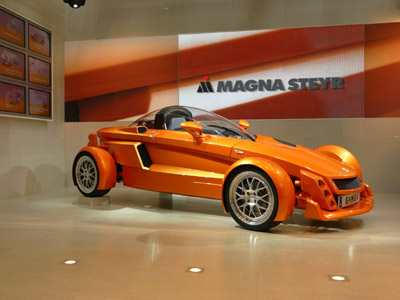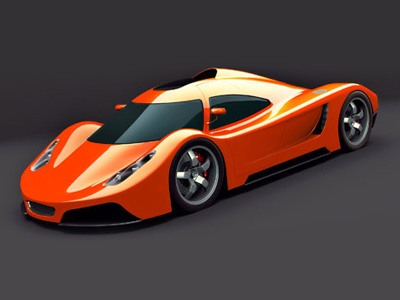Cars of Tomorrow 1950's to the present part 2
Message boards :
Cafe SETI :
Cars of Tomorrow 1950's to the present part 2
Message board moderation
Previous · 1 . . . 5 · 6 · 7 · 8 · 9 · 10 · 11 . . . 28 · Next
| Author | Message |
|---|---|
|
John McLeod VII Send message Joined: 15 Jul 99 Posts: 24806 Credit: 790,712 RAC: 0 
|
Here is an article on the subject. I am not going to try it. I had some experience with an antifreeze leak into a cylinder once. This is distinctly bad for the cylinder and the piston. The cylinder wall had an 1/8" deep pit on one side, and about half of the thickness of the top of the piston was eroded away.   BOINC WIKI |
 Matthew Love Matthew Love Send message Joined: 26 Sep 99 Posts: 7763 Credit: 879,151 RAC: 0 
|
|
 Matthew Love Matthew Love Send message Joined: 26 Sep 99 Posts: 7763 Credit: 879,151 RAC: 0 
|
   LETS BEGIN IN 2010 |
 Captain Avatar Captain Avatar Send message Joined: 17 May 99 Posts: 15133 Credit: 529,088 RAC: 0 
|
 
|
|
Lester Send message Joined: 6 Jun 07 Posts: 414 Credit: 38,111 RAC: 0 |
Here is an article on the subject. So I was watching Myth Busters. They tested all those gimmicks to increase mileage. None worked. They tested acitone also. It didnt work. But they added to a 50 to 1 ratio. I thought it was only a couple of ounces to a tank. I dunno. I cant be both cute And smart ! Its asking to much from GOD !!! |
|
Lester Send message Joined: 6 Jun 07 Posts: 414 Credit: 38,111 RAC: 0 |
Does buying 100 octane gas to a modern high performance engine help ? $6.00 a gallon. What about burning regular gas on a trip to Las Vegas ? |
|
John McLeod VII Send message Joined: 15 Jul 99 Posts: 24806 Credit: 790,712 RAC: 0 
|
Does buying 100 octane gas to a modern high performance engine help ? $6.00 a gallon. What about burning regular gas on a trip to Las Vegas ? The octane rating of the fuel needed for an engine is based on the design of the engine. You get no benifit from using a higher octane gas than that recommended for that particular engine. Read the manual, and it will tell you what octane rating is needed for that car. Using a fuel that has too low an octane rating will cause knocking and stumbling. Using one that is slightly too high is just hard on the pocket book. Using one that is vastly too high (aviation fuel in a car engine) is a recipe for a burned out engine.   BOINC WIKI |
|
Lester Send message Joined: 6 Jun 07 Posts: 414 Credit: 38,111 RAC: 0 |
Yeah, I just read where a guy with a ford GT asked the same question. Answer was the settings only go up to 91 octane even though u can buy 93 octane in parts of the us. What about a Ducati ? Any help ? And at a steady speed there is no load put on the engine, so regular is ok ? Have u heard about the new 5 cycle engine ? |
 Matthew Love Matthew Love Send message Joined: 26 Sep 99 Posts: 7763 Credit: 879,151 RAC: 0 
|
1950 Studebaker Bullet Nose - Marina    LETS BEGIN IN 2010 |
 Matthew Love Matthew Love Send message Joined: 26 Sep 99 Posts: 7763 Credit: 879,151 RAC: 0 
|
Definition of octane rating For more information see [1] The octane rating of a spark ignition engine fuel is the knock resistance (anti-knock rating) compared to a mixture of iso-octane (2,2,4-trimethylpentane, an isomer of octane) and n-heptane. By definition, isooctane is assigned an octane rating of 100 and heptane is assigned a an octane rating of zero. An 87-octane gasoline, for example, possesses the same anti-knock rating of a mixture of 87% (by volume) iso-octane and 13% (by volume) n-heptane. This does not mean, however, that the gasoline actually contains these hydrocarbons in these proportions. It simply means that it has the same autoignition resistance as the described mixture. A high tendency to autoignite, or low octane rating, is undesirable in a spark ignition engine but desirable in a diesel engine. The standard for the combustion quality of diesel fuel is the cetane number. A diesel fuel with a high cetane number has a high tendency to autoignite, as is preferred. Measurement methods The most common type of octane rating worldwide is the Research Octane Number (RON). RON is determined by running the fuel through a specific test engine with a variable compression ratio under controlled conditions, and comparing these results with those for mixtures of isooctane and n-heptane. There is another type of octane rating, called Motor Octane Number (MON) or the aviation lean octane rating, which is a better measure of how the fuel behaves when under load. MON testing uses a similar test engine to that used in RON testing, but with a preheated fuel mixture, a higher engine speed, and variable ignition timing to further stress the fuel's knock resistance. Depending on the composition of the fuel, the MON of a modern gasoline will be about 8 to 10 points lower than the RON. Normally fuel specifications require both a minimum RON and a minimum MON. In most countries (including all of Europe and Australia) the "headline" octane that would be shown on the pump is the RON, but in the United States, Canada and some other countries the headline number is the average of the RON and the MON, sometimes called the Anti-Knock Index (AKI), Road Octane Number (RdON), Pump Octane Number (PON), or (R+M)/2. Because of the 8 to 10 point difference noted above, this means that the octane in the United States will be about 4 to 5 points lower than the same fuel elsewhere: 87 octane fuel, the "regular" gasoline in the US and Canada, would be 91-92 in Europe. However most European pumps deliver 95 (RON) as "regular", equivalent to 90-91 US (R+M)/2, and even deliver 98 (RON) or 100 (RON). The octane rating may also be a "trade name", with the actual figure being higher than the nominal rating. It is possible for a fuel to have a RON greater than 100, because isooctane is not the most knock-resistant substance available. Racing fuels, straight ethanol, AvGas and liquified petroleum gas (LPG) typically have octane ratings of 110 or significantly higher - ethanol's RON is 107 (MON 89, AKI 98) reference[2]. Typical "octane booster" additives include tetra-ethyl lead and toluene. Tetra-ethyl lead is easily decomposed to its component radicals, which react with the radicals from the fuel and oxygen that would start the combustion, thereby delaying ignition. This is why leaded gasoline has a higher octane rating than unleaded.   LETS BEGIN IN 2010 |
 Matthew Love Matthew Love Send message Joined: 26 Sep 99 Posts: 7763 Credit: 879,151 RAC: 0 
|
   LETS BEGIN IN 2010 |
|
Lester Send message Joined: 6 Jun 07 Posts: 414 Credit: 38,111 RAC: 0 |
OK Matthew L . I am reading out of my manual for my Dodge Viper ( which scares the hell out of me) ! Octane 91 OR HIGHER. Use gasoline from pumps that display the WWFC sticker (World Wide Fuel Charter) which I have never heard of. I can use Oxygenate Blends, but 10% alcohol doesnt excite me for obvious reasons. Dont use Methanol. MMT in gasoline aint good. Oh ! And most important---DO NOT INHALE EXHAUST GASES !!! Why the F..k did they HAVE to add THAT tip ? Oh, also.. rated vehicle Capacity is 415 lbs, 2 seats....HUMMM |
 Matthew Love Matthew Love Send message Joined: 26 Sep 99 Posts: 7763 Credit: 879,151 RAC: 0 
|
saab concept car    LETS BEGIN IN 2010 |
 Matthew Love Matthew Love Send message Joined: 26 Sep 99 Posts: 7763 Credit: 879,151 RAC: 0 
|
Magna Steyr    LETS BEGIN IN 2010 |
 Matthew Love Matthew Love Send message Joined: 26 Sep 99 Posts: 7763 Credit: 879,151 RAC: 0 
|
Rinspeed concept car    LETS BEGIN IN 2010 |
 Matthew Love Matthew Love Send message Joined: 26 Sep 99 Posts: 7763 Credit: 879,151 RAC: 0 
|
VAD.HO     LETS BEGIN IN 2010 |
 Matthew Love Matthew Love Send message Joined: 26 Sep 99 Posts: 7763 Credit: 879,151 RAC: 0 
|
Acura Advanced Sports Car Concept    LETS BEGIN IN 2010 |
 Matthew Love Matthew Love Send message Joined: 26 Sep 99 Posts: 7763 Credit: 879,151 RAC: 0 
|
The Honda Cub    LETS BEGIN IN 2010 |
 Matthew Love Matthew Love Send message Joined: 26 Sep 99 Posts: 7763 Credit: 879,151 RAC: 0 
|
I2B Concept Raven    LETS BEGIN IN 2010 |
 Matthew Love Matthew Love Send message Joined: 26 Sep 99 Posts: 7763 Credit: 879,151 RAC: 0 
|
   LETS BEGIN IN 2010 |

©2024 University of California
SETI@home and Astropulse are funded by grants from the National Science Foundation, NASA, and donations from SETI@home volunteers. AstroPulse is funded in part by the NSF through grant AST-0307956.
